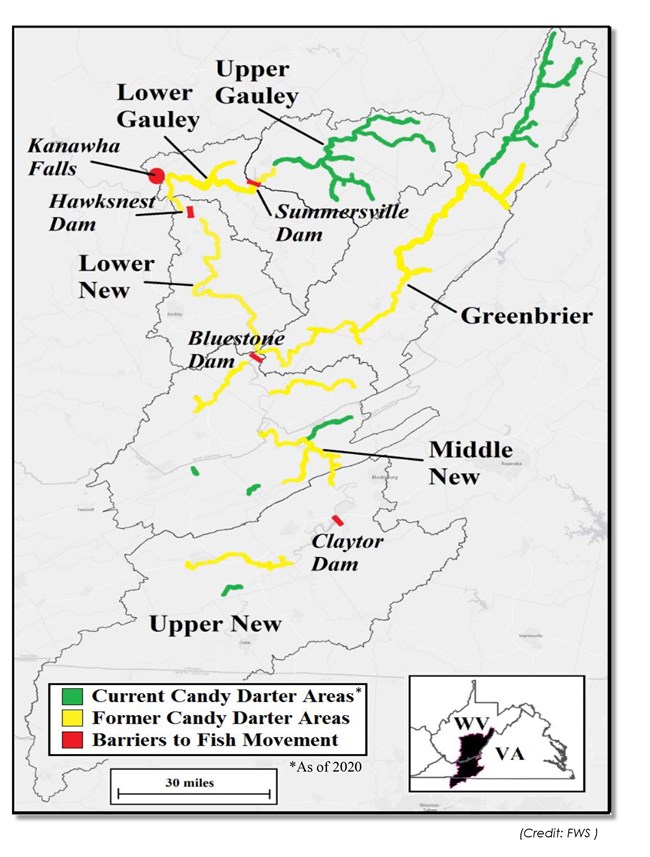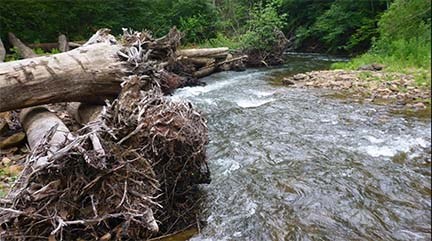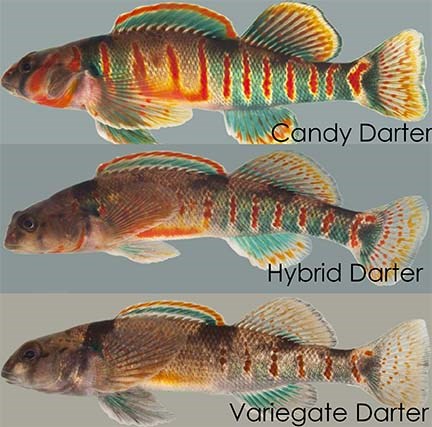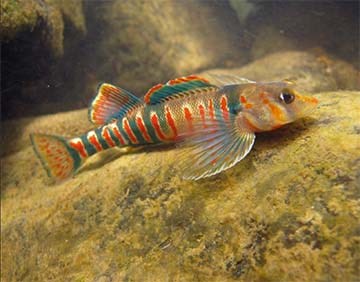
FWS, T. Travis Brown The splash of color in our watershed. First documented in Pocahontas County, West Virginia in 1931, this species of darter is native to the upper Kanawha River Basin. Found nowhere else in the world, candy darters find their home in these Central Appalachian waters. Candy darters were listed as a federally endangered species as a result of habitat impacts from historic land uses and the introduction of non-native fish into streams inhabited by candy darter. Together we can work to protect this vibrant species. IdentificationCandy darters (Etheostoma osburni) are vibrant fish, known for the colorful spawning colors of the male. Female candy darters have similar markings, although the colors are often muted, with a general olive hue. Candy darters are not the only brightly colored fish in our streams; they can easily be confused with the closely related variegate darter (Etheostoma variatum) and Kanawha darter (Etheostoma kanawhae). 
Stuart Welsh 
Stuart Welsh 
Stuart Welsh/Thomas Uland 
FWS DistributionCandy darters are historically only native to the upper Kanawha River Basin, which includes the Gauley, Greenbrier and New River watersheds. Their current distribution is now restricted to a few streams, indicated in green, due to threats that include hybridization with an introduced, closely related darter species (variegate darter) and habitat degradation. 
HabitatCandy darters typically live in cold, clear, fast moving sections of small to medium-sized rivers. Candy darters also rely on clean gravel on the stream bottom where they can lay their eggs, and the presence of larger cobbles and boulders that they use for shelter. 
ThreatsHybridization 
FWS, T. Travis Brown Ecosystem RoleCandy darters are an important link in healthy, balanced aquatic food webs. They help convert and transfer energy in aquatic ecosystems by feeding on a variety of macroinvertebrates (including mayflies and caddisflies) which enable candy darter to grow large enough to become prey for larger fish, like trout and bass. Candy darters are also known to help with the reproduction of freshwater mussels, and in turn the mussels constantly work to filter out pollutants in the water to help keep our rivers clean. 
macroinvertebrates.org How You Can HelpWe need your help to protect the candy darter! Many people, animals and fish call these watersheds home, and you can do your part to protect these habitats and the creatures in them.

|
Last updated: November 30, 2020
